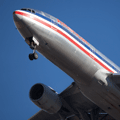
By The Editors
Tami McLallen, director of American Airlines FlagShip University, oversees a robust learning portfolio.
One of the world¹s largest airlines, American services the United States, Latin America, Europe, and Asia. Roughly 35 percent of its flights are international. It employs some 82,000 workers worldwide, with some 65 percent of those represented by one of three labour unions.
On an average day, American will fly 27,000 passengers on some 3,300 flights. It will receive more than 239,000 reservations calls. It will handle more than 300,000 pieces of luggage.
Meanwhile, the airline is striking new global alliances and joint operation agreements left and right. It is evolving its business model to accommodate more customized travel. Its fleet and services are under constant transformation, and its labor force has been ageing.
For all those reasons, as McLallen explained to the attendees of the HRO Today Europe Summit in 2010, American needed to change its learning systems. It needed to adapt and transform the way it taught, while maintaining its focus on the basics of high quality, consistency, effective communication, user-friendliness, and accurate record keeping.
Because the university was highly customised and people-dependent, efforts and tools were duplicated. Best practices to improve operations were not leveraged.
In March 2006, after a five-month vetting process via requests for proposal, American selected IBM, eventually formalising the engagement with a contract in February 2007. The story of what happened from there is told in the six slides here.
— The Editors














